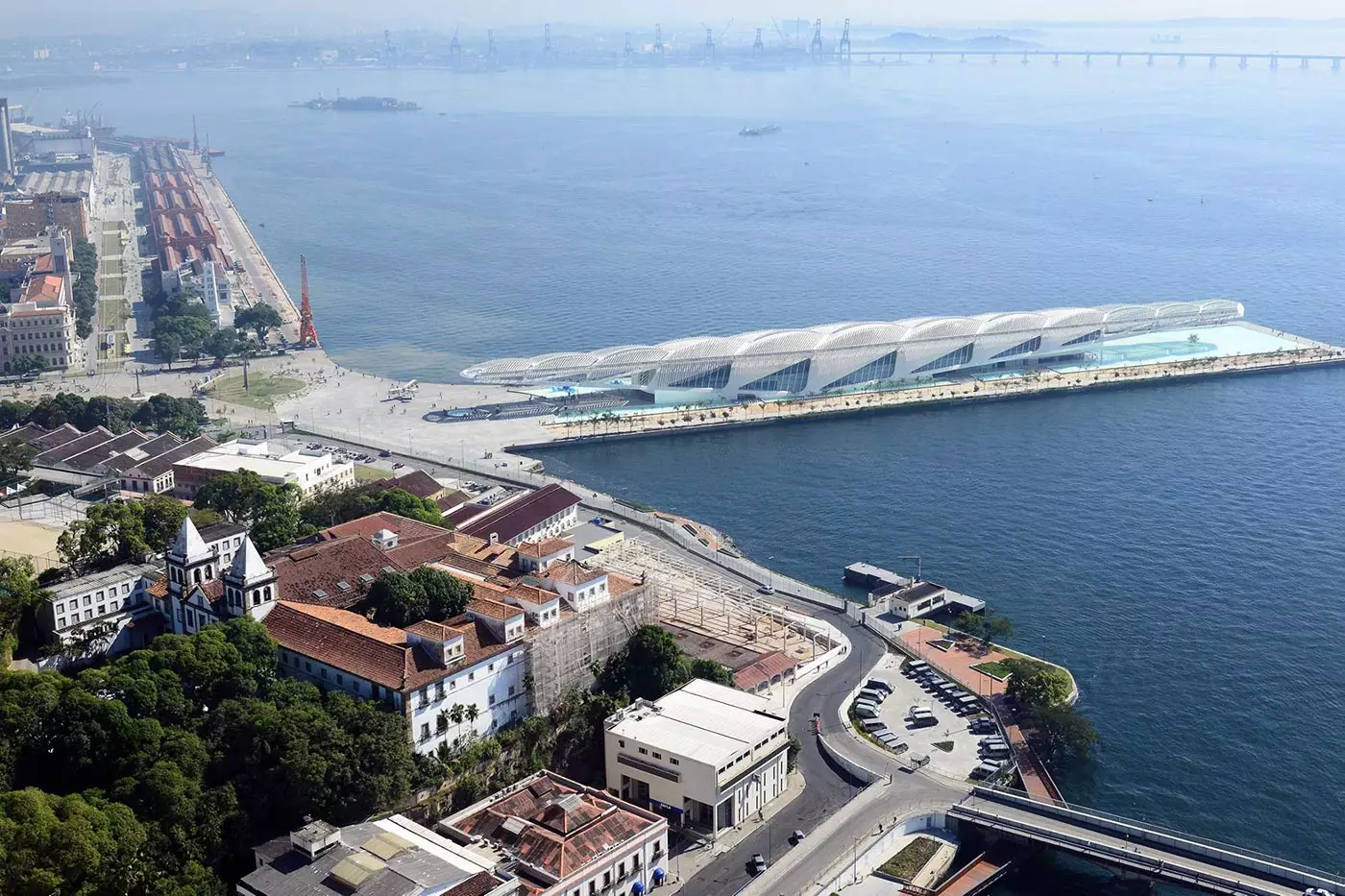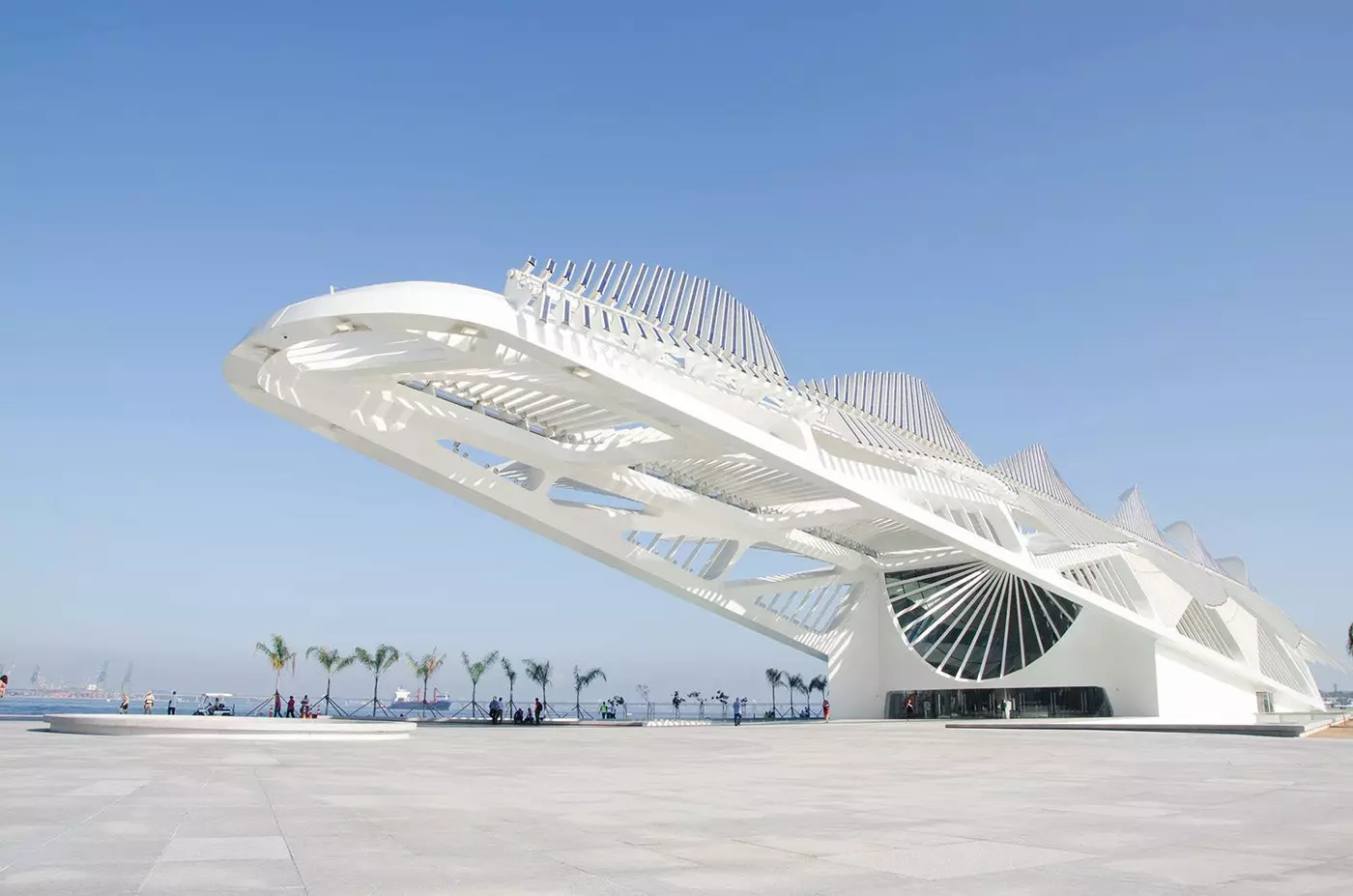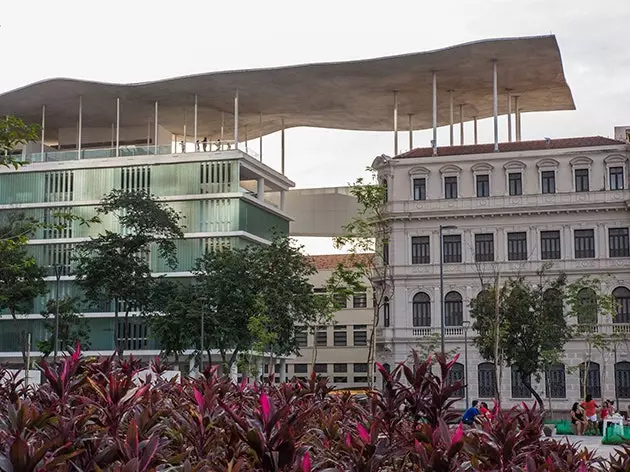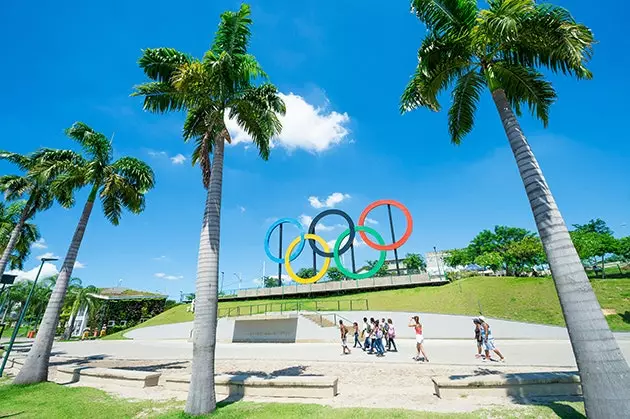
Porto Maravilha, the new landscape
A PORT THAT IS A WONDERFUL
The epicenter of all the transformations is the port region. Where before there was a gray scalextric where thousands of cars passed now they show pedestrian promenades on the edge of Guanabara Bay , gardens where families picnic on Sundays and state-of-the-art museums. It is renamed as 'Porto Maravilha'. Mauá Square is the place that best condenses all these changes. Here, the Museum of Tomorrow, the work of Santiago Calatrava, is the real protagonist . With its stylized white shapes and interactive content focused on sustainability and respect for the environment the museum has entered directly to the top of the podium of the new Olympic milestones.

The Museum of Tomorrow by Santiago Calatrava
Somewhat overshadowed by the gimmicky Calatrava building the **Museo de Arte de Rio (MAR)** across the square, too, has plenty to offer. Opened in 2013, it houses temporary exhibitions of contemporary art, photography, history of the city, etc. During the Games, the exhibition 'A cor do Brasil' will be on the bill, a review of the history of Brazilian painting, with important paintings by the painter Tarsila do Amaral. The museum's viewpoint, with its iconic undulating roof, is free and houses a pleasant restaurant with sea views. Between both museums, the letters #OlympicCity , in the purest Hollywood poster style, have become the most coveted photo by instagrammers for months.
Until recently this was one of the most degraded parts of Rio, taken over by crime and prostitution. Now it is becoming at a dizzying pace in the trendy neighborhood. To give it the final push during the Olympic Games, the area will become the Olympic Boulevard and will be filled with concerts, outdoor activities and screens from which to follow the competitions live.

Rio Art Museum
THE ESSENCE OF ‘LITTLE AFRICA’
But the glitter of Olympism should not steal the limelight from the essence of this part of the city, the oldest and the one that has best known how to preserve the Portuguese heritage. The Sao Bento monastery , for example, could well be one of the main monuments of Lisbon. The mountains of gold that cover every corner of its 16th century church they shine even more on Sunday mornings, when the monks who live there start the day with Gregorian chant: nothing more than the antipodes of all the clichés associated with Rio.
Very close to São Bento, the Morro da Conceição stands out with its endearing set of tiled houses and small baroque churches. At its feet is the Pedra do Sal, a tiny square with a huge rock carved by slaves. The Africans brought by force to Brazil were forced to excavate the stone in order to carry sacks of salt to the top of the hill. Years later, samba emerged in that same corner, who knows if it was a way of redeeming itself from that dark past. Every Monday and Friday night a lively samba round , where the musicians and the public come together in a communion that is difficult to explain.
There are various cultural circuits to get to know this region, which the composer Heitor dos Prazeres baptized as 'Little Africa'. Very close to the Pedra do Sal, it is worth visiting the Jardim Suspenso do Valongo and the Cais do Valongo, the remains of the dock where the slave ships docked. It is also worth approaching the Instituto dos Pretos Novos. The owners of the house that now houses the museum were doing some renovation work when, to everyone's surprise bones began to appear in the subsoil . Shortly after it was learned that they were on the largest slave cemetery in the world, with more than tens of thousands of buried corpses. The slaves who did not resist the hard journey from Africa and died before being commercialized were buried there.
THE MADUREIRA PARK
“ If Rio were a human body, Madureira would be his heart ”, said the mayor of Rio, Eduardo Paes, when inaugurating some monumental Olympic rings in the central park of this neighborhood in the north. Madureira is a popular neighborhood that will fall in love with those who want to know the River that lies beyond the postcards. It has also benefited from the Olympic legacy. The new Madureira Park , the second largest in the city, has everything from skate rinks to artificial beaches, waterfalls and huge Olympic rings. After the ride you can market , an authentic involuntary monument to the kistch aesthetic where you can buy everything imaginable, from plastic counterfeits to sacred herbs to offer to the Orishas. This neighborhood is also the most musical in Rio, do not leave without presenting the honors to Portela and Império Serrano, two of the most traditional samba schools in the city.

Madureira Park
THEY WILL BE PENDING...
The calendar has advanced very quickly and some works will not be ready for the Games, but they will become obligatory visits for post-Olympic Rio tourists: The AquaRio will be the largest aquarium in Latin America, with 8,000 animals from more than 350 species . It will occupy one of the old port warehouses, facing Guanabara Bay, giving Porto Maravilha even more luster.
The Museum of Image and Sound (MIS), dedicated to Brazilian music, will also have a privileged location, right on Copacabana beach. A building of futuristic architecture will house exhibitions, an open-air cinema on the roof, a panoramic restaurant with sea views and most importantly: the crazy dresses – fruit hats included – of the most universal carioca, Carmen Miranda. Both the aquarium and the museum are expected to open to the public before the end of the year.
Follow @joanroyogual
